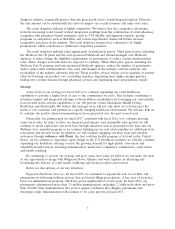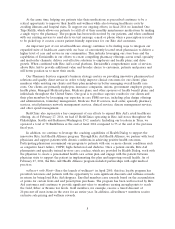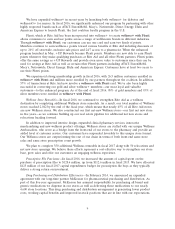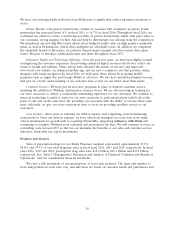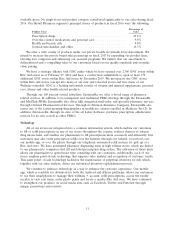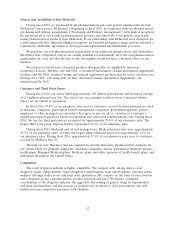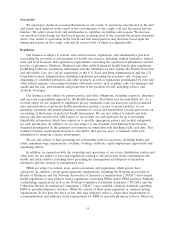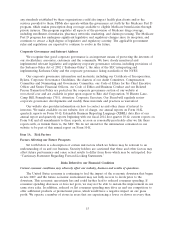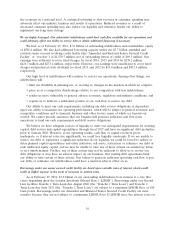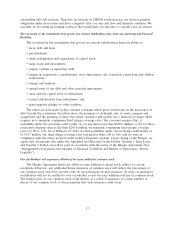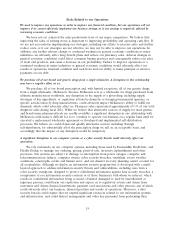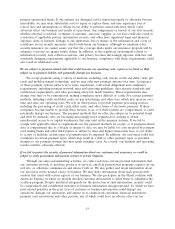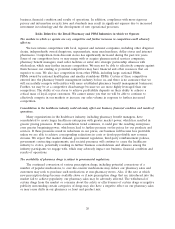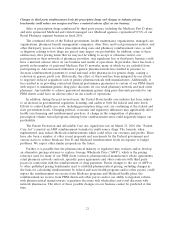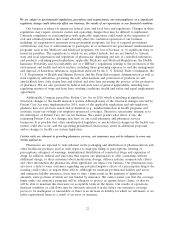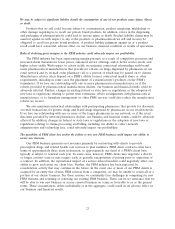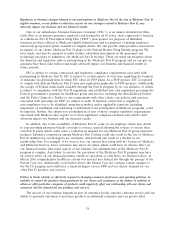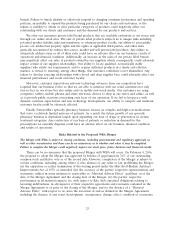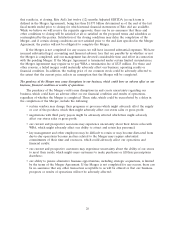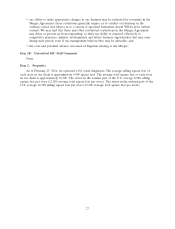Rite Aid 2016 Annual Report Download - page 17
Download and view the complete annual report
Please find page 17 of the 2016 Rite Aid annual report below. You can navigate through the pages in the report by either clicking on the pages listed below, or by using the keyword search tool below to find specific information within the annual report.outstanding debt will increase. Therefore an increase in LIBOR would increase our interest payment
obligations under those loans and have a negative effect on our cash flow and financial condition. We
currently do not maintain hedging contracts that would limit our exposure to variable rates of interest.
The covenants in the instruments that govern our current indebtedness may limit our operating and financial
flexibility.
The covenants in the instruments that govern our current indebtedness limit our ability to:
• incur debt and liens;
• pay dividends;
• make redemptions and repurchases of capital stock;
• make loans and investments;
• prepay, redeem or repurchase debt;
• engage in acquisitions, consolidations, asset dispositions, sale- leaseback transactions and affiliate
transactions;
• change our business;
• amend some of our debt and other material agreements;
• issue and sell capital stock of subsidiaries;
• restrict distributions from subsidiaries; and
• grant negative pledges to other creditors.
The senior secured credit facility contains covenants which place restrictions on the incurrence of
debt beyond the restrictions described above, the payment of dividends, sale of assets, mergers and
acquisitions and the granting of liens. Our senior secured credit facility has a financial covenant which
requires us to maintain a minimum fixed charge coverage ratio. The covenant requires that, if
availability under the revolving credit facility (a) on any date is less than $200.0 million, or (b) for three
consecutive business days is less than $250.0 million, we maintain a minimum fixed charge coverage
ratio of 1.00 to 1.00. As of February 27, 2016, we had availability under our revolving credit facility of
$1,530.7 million, our fixed charge coverage ratio was greater than 1.00 to 1.00, and we were in
compliance with the senior secured credit facility’s financial covenant. Upon closing of the Merger, we
expect that all amounts due under the Amended and Restated Credit Facility, Tranche 1 Term Loan
and Tranche 2 Term Loan will be paid in accordance with the terms of the Merger Agreement (See
‘‘Management’s Discussion and Analysis of Financial Condition and Results of Operations—Future
Liquidity’’).
Our stockholders will experience dilution if we issue additional common stock.
The Merger Agreement limits our ability to issue additional capital stock, subject to certain
exceptions. However, any additional future issuances of common stock will reduce the percentage of
our common stock owned by investors who do not participate in such issuances. In most circumstances,
stockholders will not be entitled to vote on whether or not we issue additional shares of common stock.
The market price of our common stock could decline as a result of issuances of a large number of
shares of our common stock or the perception that such issuances could occur.
17


